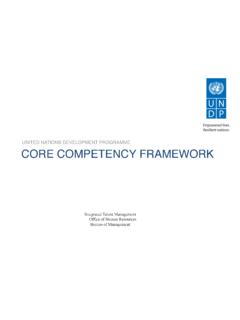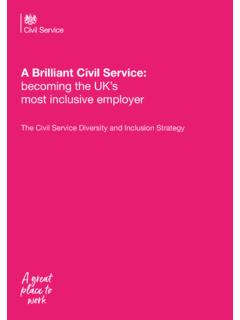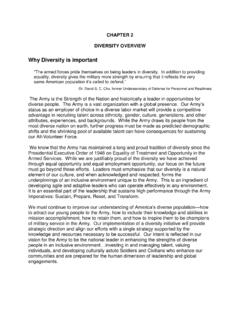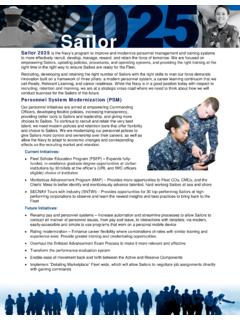Transcription of Reimagine and craft the employee experience - Deloitte US
1 Reimagine and craft the employee experience : Design thinking in actionAs used in this document, Deloitte means Deloitte Consulting LLP, a subsidiary of Deloitte LLP. Please see for a detailed description of our legal structure. Certain services may not be available to attest clients under the rules and regulations of public and craft the employee experience : Design thinking in actionReimagine and craft the employee experience : Design thinking in action1 Reimagine and craft the employee experience : Design thinking in actionThe business imperativeYour organization is responding to major business and workforce disruptions, driving changes to the way your enterprise runs and intensifying the need to focus on the customer experience to drive growth.
2 As a leader in HR, you understand the critical linkage between the employee experience , your company s business strategy, and customer service. But, how to forge it effectively? The answer may lie in applying design thinking to Reimagine and craft the employee experience to help generate higher engagement, satisfaction, and strategic alignment to drive brand differentiation, customer service excellence, and growth. While the term employee experience has gained traction, in this context employee must really consider the end-to-end workforce that includes candidates, employees, contingent workers, and is this so important?
3 Because studies have documented a clear statistical relationship between increases in frontline engagement, increases in customer service, and revenue So whether your team is focused on strategy, process transformation, or implementing new technology, applying design thinking to Reimagine and craft the employee experience is key to driving sustainable business performance. Design for the moments that matterBersin by Deloitte , Deloitte Consulting LLP, developed The Simply Irresistible Organization model defining the end-to-end, irresistible employee experience . We have since married this model with a tested, customer-centric experience approach that brings together engagement, experience , and results.
4 In this perspective, we explore several examples of ways that HR professionals can apply design thinking to imagine, design, and deliver an experience that delights the workforce at the moments that matter across their interactions with the and craft the employee experience : Design thinking in action2 Shifting from process thinking to experience thinking Design thinking places the customer in the center of the design and has been instrumental in creating the kinds of easy, digital experiences that people expect in their daily lives for everything from ordering products to paying bills to connecting with friends on social media.
5 Just as numerous consumer-facing processes and interactions have been retooled and simplified to provide a more satisfying customer experience , HR can begin to shift its approaches as well. The idea is to move from a process-driven mindset to a mindset that always begins with the experience for the HR customer who could be a candidate, employee , contingent worker, or even alumni. So, for example, instead of thinking in process Deloitte s employee experience frameworkSource: Deloitte Consulting LLPterms, What do we need new-hires to do on their first day? HR thinks in experience terms: What do we want a new employee s first day to be like?
6 HR leaders are rapidly adopting this experience -oriented approach and applying it to truly rethink how HR work happens. Design thinking helps focus on the needs of customers when shaping an experience that s easy, intuitive, and enables customers to achieve their goals. It also helps define HR through the lens of the workforce s journey across processes to shape the desired impression and feeling among the workforce, ultimately helping to create experiences that are meaningful and able to make the biggest impact at the moments that truly matter for the individual. So, it s not only thinking about an employee s first day but also the total onboarding experience , and all of the ongoing interactions between that employee and HR throughout his or her career and even as a retiree or s Global Human Capital Trends 2 0172 report revealed that nearly 80 percent of executives rated employee experience very important (42 percent) or important (38 percent)
7 , but only 22 percent reported that their companies were excellent at building a differentiated employee experience vision aligned with business and talent strategiesDefine and brand the end-to-end experienceImplement prioritized initiatives roadmap with targeted sprintsCapture value of improving experience and find enhancementsAlignFocusExecuteMeasureCraf ting the workforce experience to achieveThe simply irresistible organization Meaningful workSupportive managementPositive Work environmentGrowth opportunityTrust in leadershipAutonomyClear and transparent goalsFlexible work environmentTraining and support on the jobMission and purposeSelection to fitCoachingHumanistic workplaceFacilitated talent mobilityContinuous investment in peopleSmall, empowered teamsInvestment in development of managersCulture of recognitionSelf-directed, dynamic learningTransparency and honestyTime for slackAgile performance managementFair, inclusive, diverse work environmentHigh-impact learning cultureInspirationCollaboration and connectionReimagine and craft the employee experience : Design thinking in action3 Three key principles.
8 Empathize, envision, experimentWhile design thinking has many definitions and various possible paths to implementation, three principles stand out as fundamental to effectively engaging the workforce as customers:01. Empathize: Understand the workforce and the problems they face. The foundation of this principle is the ability to empathize with segments of your workforce. Empathy is what allows us to share the experiences and feelings of others, creating opportunities for engagement. Design thinkers develop personas (representations of the qualities and characteristics of typical customers) drawn from the breadth and diversity of their workforce population.
9 Journey maps based on these personas document experiences at every step of an activity to identify the moments that matter most and to provide clarity on the problems that need solving. 02. Envision: Generate a variety of options and shape them into potential solutions. This principle involves imagining the widest possible range of options through various techniques, rather than attempting to define and evaluate a single best idea. Generating a variety of options moves stakeholders beyond the initial, obvious solutions. Doing so also increases the potential for innovation, especially when performed as part of a team.
10 The ideas with the most potential can then be prioritized and shaped into models ready for testing. 03. Experiment: Test potential solutions with real customers, and refine them with data and feedback. Testing in a real context while collecting both qualitative and quantitative data enables additional empathy with customers, more precise definitions of the problems, and continuous refinement of solutions. This step creates an opportunity for experimentation in HR while effectively managing the associated are many examples of how HR can apply design thinking to Reimagine and craft the experience to drive sustainable business performance.















